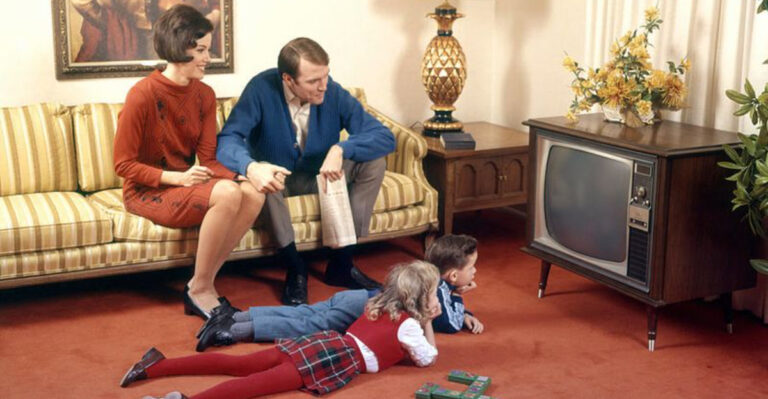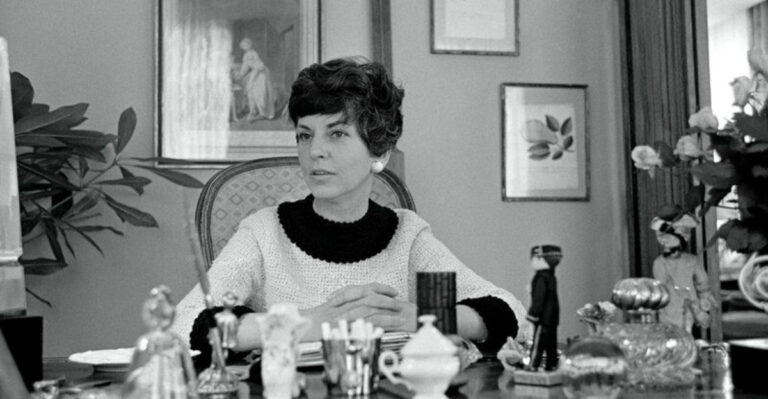37 Ridiculous Etiquette Rules Boomers Were Expected To Follow As Teens
Growing up in the boomer era came with an unofficial handbook of etiquette rules—many of which would have today’s teens raising their eyebrows (or laughing out loud). Back then, good manners weren’t just encouraged; they were practically enforced like social law.
Whether it was snapping to your feet the moment an adult walked into the room or mastering the art of the “perfect” thank-you note, these expectations shaped daily life in ways that now feel more quirky than courteous.
These rules weren’t just about being polite—they were about fitting into a world where image, tradition, and appearances often took center stage. Let’s take a playful walk through the past and revisit some of the strangest etiquette expectations boomers had to follow as teens.
1. Always Stand When an Adult Enters the Room
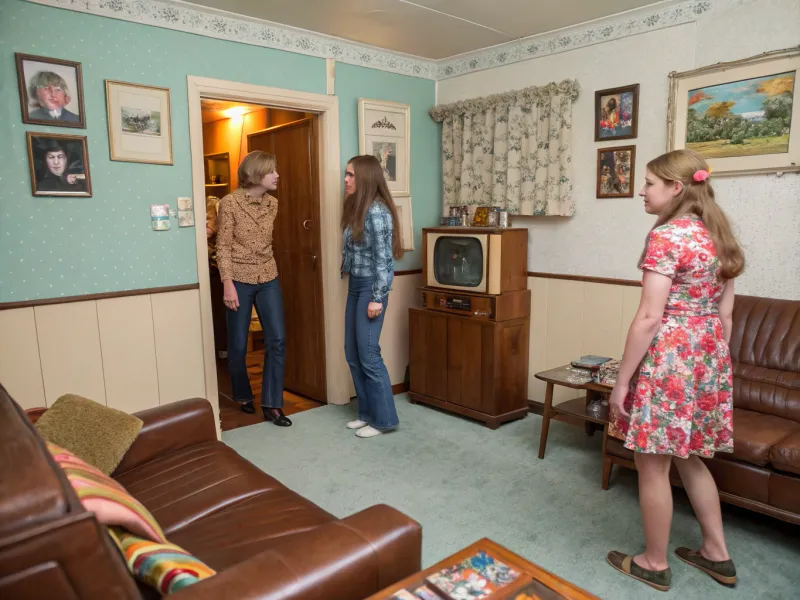
The moment an adult walked into the room, it was like an unspoken alarm went off. Every teen was expected to spring to their feet as if they were soldiers standing at attention. It wasn’t just a rule; it was practically a reflex.
Suppose you’re lounging on the couch, finally finding a comfortable spot, when suddenly, your dad’s friend steps in. Up you go, leaving the comfort behind. This etiquette rule felt less about politeness and more like a drill. It made every entrance dramatic, as though a commander had arrived.
If you forgot, oh boy, the disapproving looks you’d get! It’s a wonder any of us ever developed back problems with all that jumping up and down. Did it instill respect? Perhaps. But mostly, it just kept us on our toes, quite literally, at all times.
2. Girls Must Sit With Knees Together at All Times
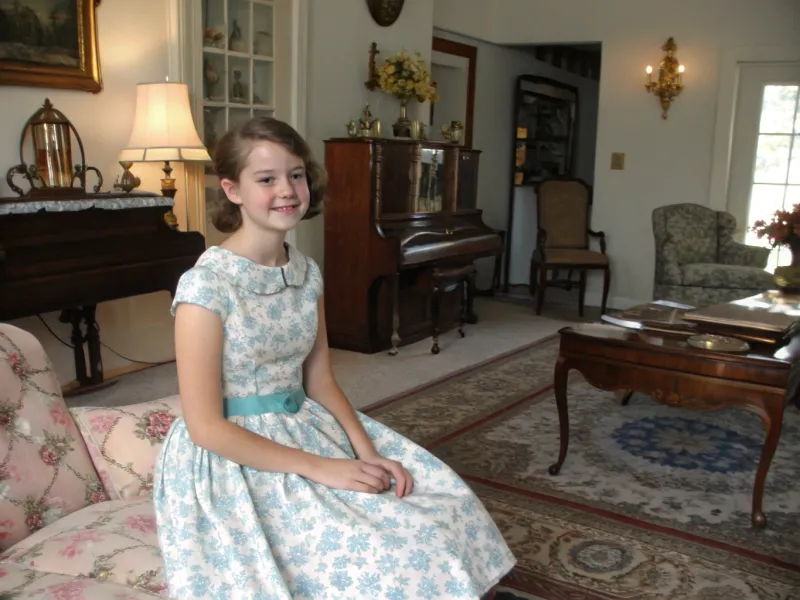
Sitting with knees glued together was not merely a preference; it was deemed essential for proper decorum. For teenage girls, posture was scrutinized to the nth degree, especially during social gatherings. It seemed less about manners and more about fitting a rigid image of femininity.
Oh the constant vigilance required to keep those knees perfectly aligned in every setting! Whether seated in a family room or at a school function, this rule was omnipresent.
It echoed the broader gender norms of the era, reinforcing the idea that girls should be seen and not heard—or, in this case, not appear too comfortable. Reflecting now, it’s clear how this rule was less about etiquette and more about controlling how girls presented themselves.
3. Never Speak Unless Spoken To

Some boomers still have these habits they need to stop doing, such as encouraging teens to be quiet. The rule to never speak unless spoken to wasn’t just about respect; it was a way of life. Even if you had a brilliant idea or a funny quip, keeping it to yourself was the expectation.
This wasn’t just practiced at home; it permeated schools and social gatherings. It was as if speaking out of turn was a greater crime than not speaking at all. Being spontaneous or engaging was seen as overstepping boundaries. So many budding comedians and thinkers had to stifle their voices.
This rule taught us to listen, sure, but at the cost of self-expression. The irony? It was often the quietest people who had the most to say. It’s a wonder any of us learned to speak up again once we realized being heard was not the end of the world.
4. Boys Must Always Open Doors for Girls
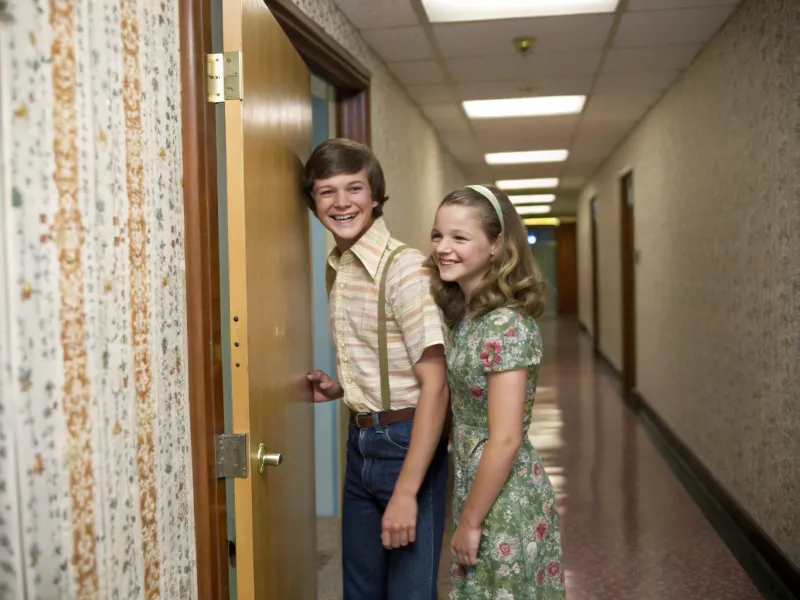
Boys were practically trained to be doormen, always ensuring they held open doors for girls. This rule was ingrained from a young age, presented as the epitome of gentlemanly behavior. It was less about etiquette and more about reinforcing gender roles.
On the surface, it seemed chivalrous, but beneath it lay mixed messages. Boys were taught that girls were delicate, in need of protection and assistance at every turn. Meanwhile, girls learned to expect this treatment, whether they wanted it or not.
Thinking about it now, it feels more like a performance than genuine courtesy. It dictated interactions, making every entryway a stage for societal norms. While it taught boys to be considerate, it also implied girls couldn’t fend for themselves.
5. Don’t Call Adults by Their First Names

The naming conventions were strict: first names were for peers, not for addressing adults. Calling your friend’s mom by her first name was akin to breaking a sacred rule. It was all about maintaining a veneer of respect and formality.
Addressing adults with titles like Mr., Mrs., or Miss was standard practice, reinforcing social hierarchies. It wasn’t just about politeness; it was about knowing your place in the social order. Even in informal settings, this rule held fast.
Looking back, it seems like an unnecessary barrier to genuine connection. Was it about respect or simply about maintaining distance? Either way, it felt like a constant reminder of the generational divide. That minor scandal caused by a slip of the tongue was often more memorable than the actual conversations had.
6. Always Say “Yes, Sir” and “Yes, Ma’am”
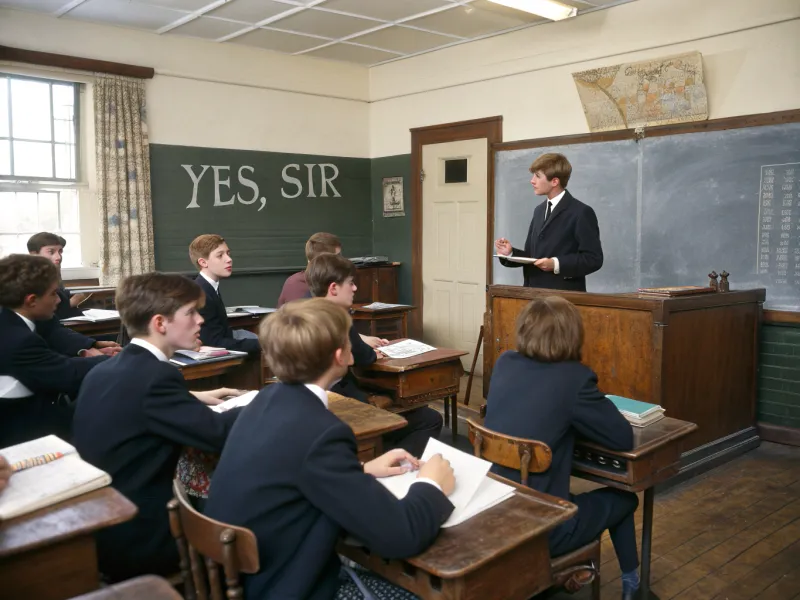
Teens were practically walking around sounding like young cadets, always responding with a crisp “Yes, Sir” or “Yes, Ma’am”. It was drilled into us as the gold standard of respect, making even the simplest exchanges feel like military orders.
Engaging with adults this way made every conversation feel formal, as if we were constantly under evaluation. Whether in school, at home, or in public, this rule was omnipresent. It taught us respect, sure, but also added a layer of stiffness to interactions.
Nowadays, it feels like overkill for everyday chats. The rule created an aura of authority around adults, often turning casual encounters into tense affairs. In hindsight, it seems like it cultivated more fear than respect, as if a simple “yes” wasn’t sufficient without the added titles.
7. Never Wear Hats Indoors
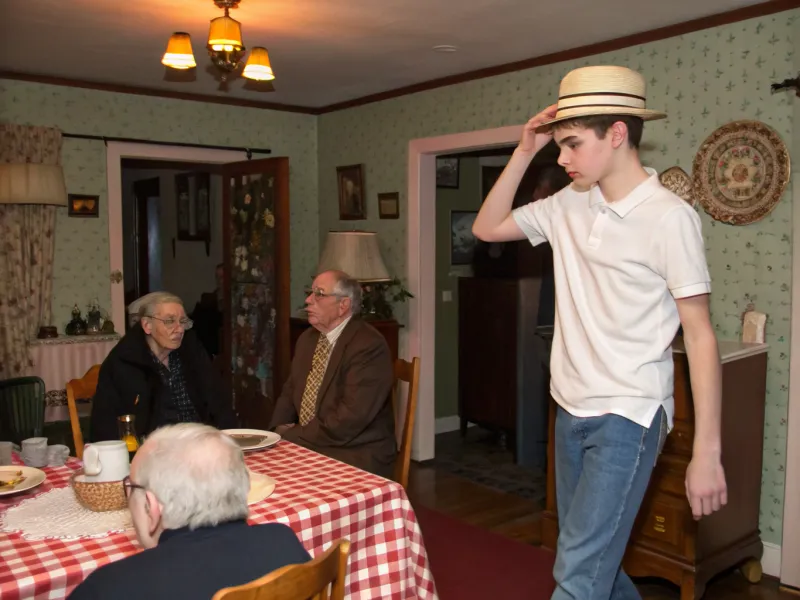
Taking off your hat indoors was treated like an unspoken law. Forgetting this could earn you a sharp glare from the older generation. It was a rule that seemed more sacred than many actual traditions.
The act of removing a hat wasn’t just about manners; it was a ritualistic gesture of respect. Whether you were entering a home, church, or even a casual gathering, that hat came off, no questions asked.
In today’s world, this rule feels antiquated, a relic from a different era of formality. Yet it’s a reminder of how something as simple as wearing a hat was loaded with social expectations. It was about showing humility, but in reality, it often felt like hoops to jump through just to avoid a reprimand.
8. Write Thank-You Notes by Hand for Everything

Writing thank-you notes by hand was an art form and an expectation. Every gift received, no matter how small, warranted a handwritten response. This included everything from birthday presents to Christmas socks from Aunt Judy.
It was about gratitude, sure, but also about formality. The process of writing these notes was a ritual of its own, agonizing over the right words to say for something as trivial as a pair of socks. As if there weren’t enough daily chores boomers were supposed to do unquestionably!
Now it seems like overkill, especially in an age where a quick text could suffice. Yet, it taught us to appreciate the thought behind gifts, even if it felt like an obligation. It was a lesson in gratitude masked as etiquette, turning every holiday into a marathon of thank-you notes that felt like a real chore.
9. No Elbows on the Table
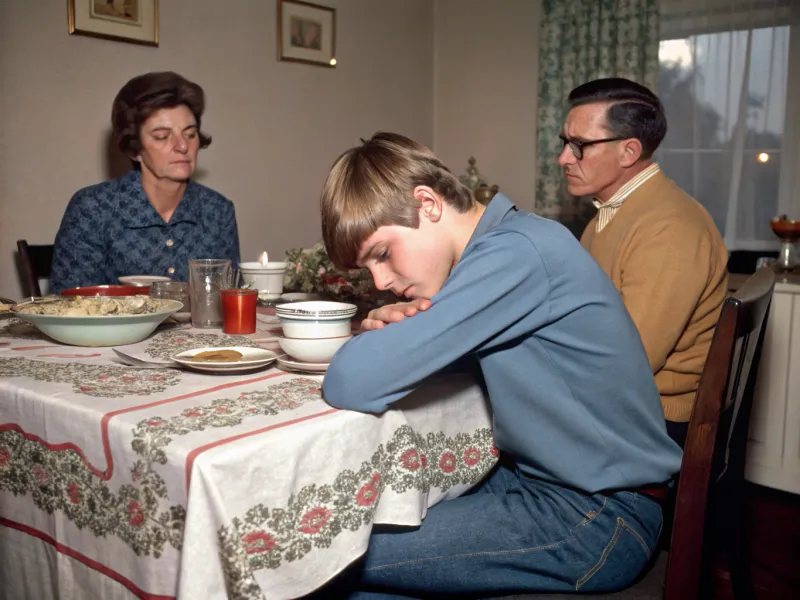
The rule about no elbows on the table was drilled into kids’ heads as if the fate of polite society depended on it. It was a line you simply didn’t cross if you wanted to avoid the stern looks and inevitable lectures.
This rule wasn’t just enforced at home but also extended to dining out and family gatherings. It was treated like the ultimate mark of decorum, separating the well-mannered from the uncouth.
Today, it seems a little excessive. Why were elbows so offensive? It’s unclear what catastrophic event was supposed to ensue if one forgot. Yet, it was an unyielding rule, turning every meal into a test of posture and composure, as if dining was more about appearance than enjoyment.
10. Girls Should Never Call Boys First

This bizarre dating rule dictated that girls should never make the first move, especially when it came to phone calls. It was an unwritten rule that discouraged girls from taking initiative in relationships.
The notion that girls should wait for boys to make the first contact was ingrained in the dating culture. It reflected the broader societal belief that boys should be the pursuers, while girls should be passive recipients.
In this day and age, this rule seems ludicrous! It taught girls to be demure and boys to be assertive, reinforcing outdated gender roles. It’s a relief that times have changed, allowing for more equal footing in relationships and encouraging everyone to take the initiative without fear or judgment.
11. Don’t Interrupt, No Matter What
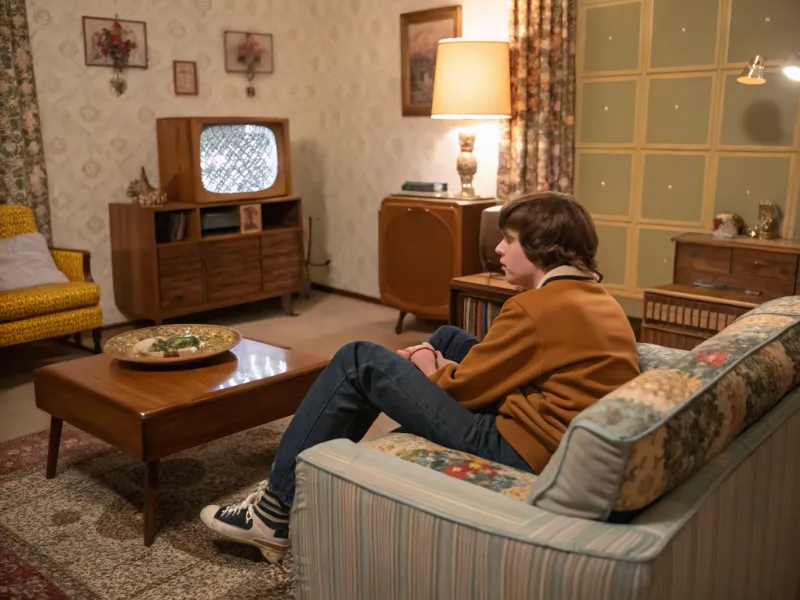
The rule against interrupting, no matter what, was one of the cornerstones of boomer etiquette. Even if you had something insightful or relevant to add, it was better to sit quietly than risk breaking this cardinal rule.
This expectation was pervasive, extending beyond formal settings into casual family gatherings and social events. It was less about respect and more about maintaining a rigid conversational hierarchy.
Thinking about it, it seems like it stifled creativity and dialogue. The fear of interrupting often led to missed opportunities for meaningful exchanges. While it taught patience and listening skills, it also curtailed spontaneity, making conversations more about endurance than engagement.
12. Always Make Eye Contact… But Not Too Much
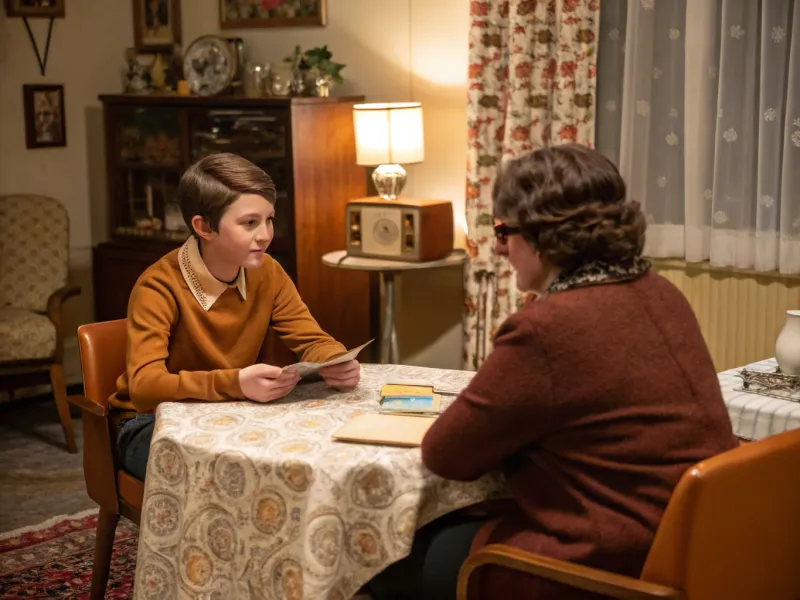
Making eye contact was an art form, a balancing act that required just the right amount of attention without going overboard. It seemed simple, but mastering this skill was critical in the world of boomer etiquette.
Too little eye contact, and you risked being seen as shifty or disinterested. Too much, and you were labeled as aggressive or impolite. It was a delicate dance that required constant vigilance. This rule cultivated a peculiar form of social anxiety, turning ordinary interactions into a test of nonverbal cues.
It taught teens to be constantly aware of their gaze, as if their social fate depended on it. In hindsight, it seems like a lot of pressure to put on young shoulders, all for the sake of adhering to an unwritten social rule.
13. No Talking Back — Even If You’re Right

Talking back, even if you were right, was a big no-no. This rule was about respecting authority, even when that authority was clearly mistaken. It wasn’t just a guideline; it was non-negotiable. The expectation was that teens would bite their tongues, no matter how passionate or justified their position.
This extended to teachers, parents, and any elder. It was about maintaining order and hierarchy within social and family structures. While it taught respect, it often led to frustration and eye-rolling moments.
It seems like it stifled open dialogue and critical thinking. It was a lose-lose situation: suppressed voices and unresolved issues. It’s a relief that today, questioning and respectful disagreement are seen as healthy, fostering more open and progressive conversations.
14. Clothes Must Always Be Ironed and Neat

The expectation was clear: clothes must always be ironed and neat. Even the slightest hint of a wrinkle could spark judgment. This rule was more about appearance than practicality, turning every outfit into a testament to one’s upbringing.
Boomers learned early on that looking unkempt was akin to a social faux pas. Every crease was an opportunity for scrutiny. This wasn’t just about looking good; it was about projecting a polished image, no matter the setting.
In today’s world, the emphasis on perfection seems excessive. It’s a reminder of how much value was placed on outward appearances. While it instilled a sense of pride in one’s appearance, the pressure to be wrinkle-free often overshadowed comfort and practicality.
15. Use Proper Titles for Everyone
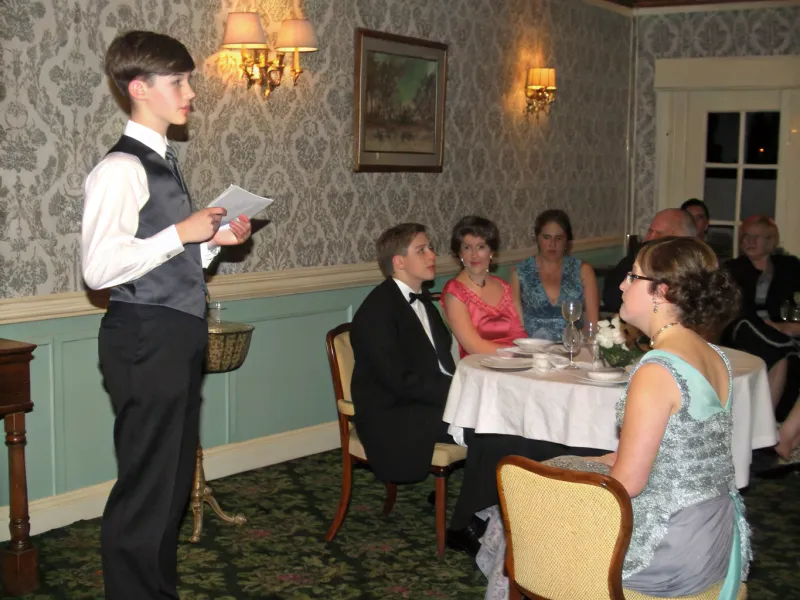
Using proper titles was non-negotiable. Addressing adults informally was a breach of etiquette. The rule was clear: Mrs. So-and-So and Mr. Such-and-Such were the norm, even in casual settings.
This was less about politeness and more about maintaining a social hierarchy. It created a boundary between generations, reinforcing the idea that adults were to be respected and revered. This formality feels excessive, don’t you think?
It made interactions stilted and less genuine, as if every conversation needed to pass a formality test. It was a constant reminder of one’s place in the social order, making genuine connections harder to forge. Today, while respect remains important, the lines are more relaxed, allowing for more authentic relationships.
16. Don’t Chew Gum in Public
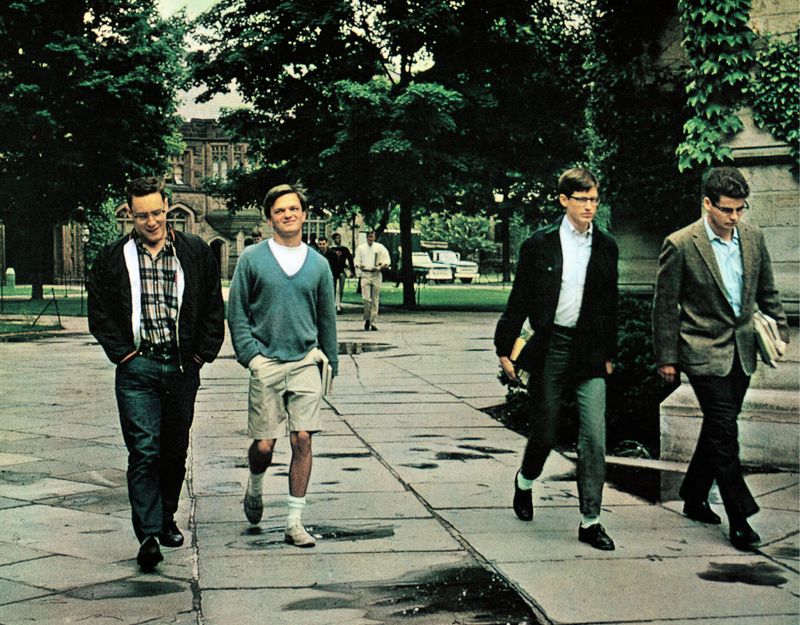
Chewing gum in public was frowned upon, almost rebellious. This little habit was seen as a slippery slope to moral collapse, a sign of juvenile delinquency if there ever was one.
The rationale was unclear, but the rule was strict. Chewing gum was considered rude and unrefined, something that could tarnish one’s image. It was less about the act itself and more about the perception it created.
Thinking back, it seems overly dramatic. It’s hard to imagine how something as trivial as chewing gum could be laden with such negative connotations. Yet, it was a minor rebellion, a simple act that felt like an act of defiance against the strict etiquette of the time.
17. Always Greet People With a Firm Handshake
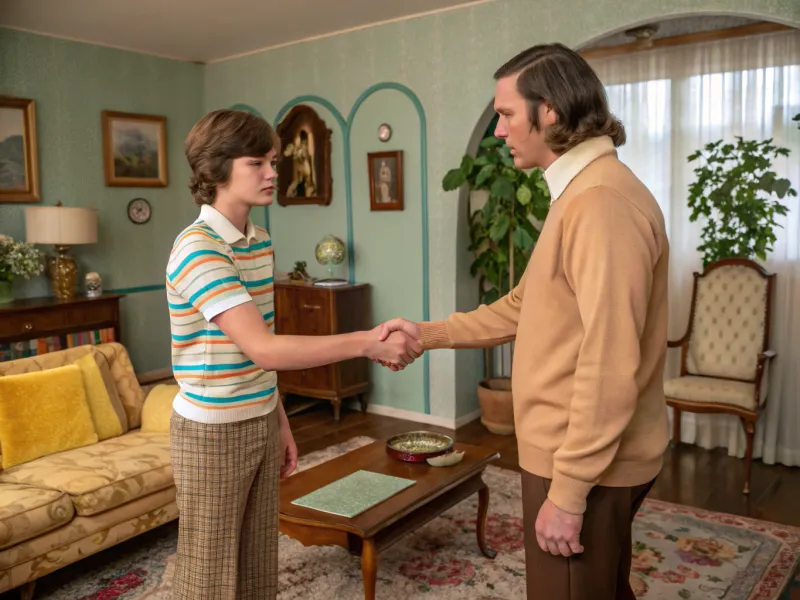
Handshakes were more than greetings; they were character tests. A firm handshake was a sign of reliability, while a limp one could label you as untrustworthy. Teens learned early on that this simple gesture carried great weight.
Meeting someone new wasn’t just about exchanging pleasantries; it was a test of sincerity and confidence. Today, it seems exaggerated. While a good handshake is still appreciated, the idea that it could define someone’s character feels excessive.
It’s a reminder of how much emphasis was placed on first impressions and superficial judgments. The pressure to perform even in such minor aspects of interaction was intense, often overshadowing the genuine connection that could be formed through more meaningful exchanges.
18. Cross Your Ankles, Not Your Legs

Crossing your ankles instead of your legs was oddly specific. For young girls, this was the expectation, an unspoken rule that dictated how they should sit.
This guideline was less about comfort and more about appearance, reinforcing the idea of modesty and decorum. It was a mannerism that seemed trivial yet held significant social weight. Looking back, it feels restrictive, as if sitting a certain way could define one’s character.
It’s a reminder of how much emphasis was placed on appearance over comfort, transforming a simple act of sitting into a performance. While it taught poise, it also highlighted the rigid expectations placed on girls, turning everyday actions into tests of etiquette.
19. Never Show Anger in Public

Showing anger in public was taboo. Boomers were taught to maintain composure no matter the situation, often leading to forced smiles and suppressed feelings.
The expectation was clear: emotions were private, not to be displayed for all to see. This rule was less about self-control and more about maintaining appearances, ensuring one’s demeanor was always pleasant.
Now it seems like an unhealthy way to handle emotions. The pressure to hide anger often led to internal conflicts and stress. It was a lesson in restraint, but at what cost? Today, while composure remains important, there’s also an understanding that expressing emotions is healthy, fostering more open and genuine interactions that allow individuals to be true to themselves.
20. Wait to Be Introduced Before Speaking
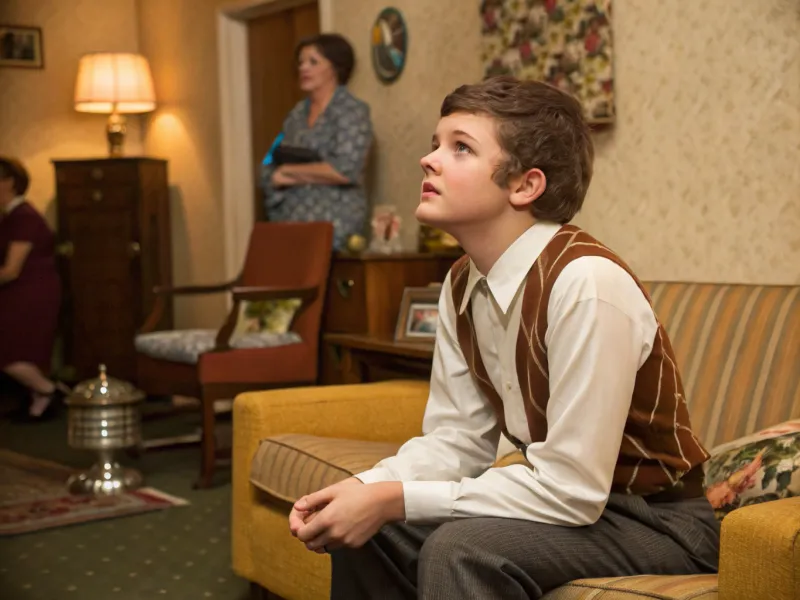
Waiting to be introduced before speaking was a peculiar rule. It turned social settings into a waiting game, where teens stood by until formally brought into the conversation.This rule was about respect and structure, ensuring everyone knew their place within social hierarchies.
It wasn’t just about manners; it was about knowing when to step in. I get the impression that it’s overly formal and restrictive. While introductions are courteous, the idea of waiting for a social summons seems excessive.
It’s a reminder of the rigid structures that governed interactions, turning casual events into orchestrated performances. Today, while introductions remain polite, the lines are more relaxed, allowing for more organic and spontaneous conversations where everyone can participate freely.
21. Boys Must Always Walk on the Curb Side of the Sidewalk
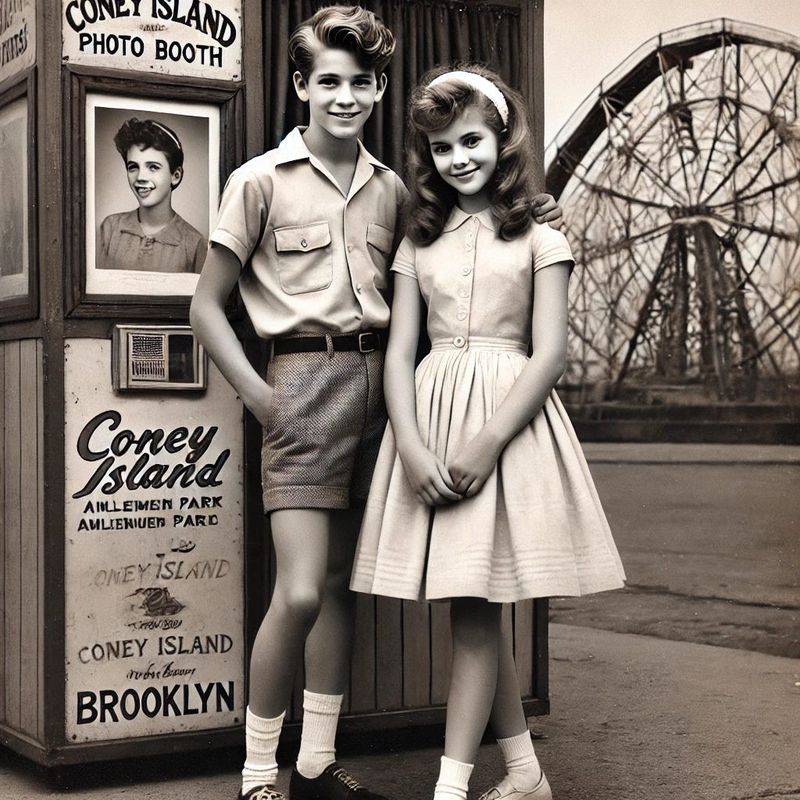
This oddly specific chivalry rule dictated that boys should always walk on the curb side of the sidewalk. It was supposed to protect girls, though from what was never quite clear. Perhaps that’s why boomers find traditional courting better than modern dating.
The rule reinforced the notion that boys were protectors, while girls needed protection, fitting into the broader gender roles of the time. Thinking about it, seems unnecessary, a relic of a bygone era of manners.
While it taught boys to be considerate, it also imposed expectations that felt more performative than practical. Today, while respect and care remain important in relationships, there’s an understanding that both parties can look out for each other, fostering more balanced and equal partnerships.
22. Girls Should Never Raise Their Voice

Girls were expected to be soft-spoken, never raising their voices. This rule was less about politeness and more about reinforcing stereotypes of femininity and compliance.
The idea was that a quiet voice reflected good manners, while a loud one was seen as disruptive or difficult. It was a lesson in restraint, teaching girls to be seen but not heard. Reflecting on this now, it feels limiting, suppressing self-expression and confidence.
It was a rule designed to maintain the status quo, discouraging girls from speaking out or asserting themselves. Today, while politeness remains valued, there’s also recognition that everyone has a right to be heard, fostering inclusivity and empowering individuals to express themselves without fear of judgment.
23. Always Send a Thank-You Gift for a Host

Attending a dinner party wasn’t just about showing up; it required a thank-you gift, part of the etiquette package deal. This was less about gratitude and more about adhering to societal norms. The gesture was seen as a sign of good upbringing, ensuring the host knew their efforts were appreciated.
The ridiculous tradition turned every invitation into a cycle of gift-giving, a ritual that felt more obligatory than genuine. Thankfully, today it seems excessive, turning simple hospitality into an exchange of material tokens.
While expressing gratitude is important, the pressure to reciprocate with gifts often overshadowed the true purpose of togetherness and friendship. Today, while thoughtful gestures remain appreciated, the focus has shifted more towards meaningful connections and experiences, rather than material exchanges.
24. Napkins Go in Your Lap Immediately
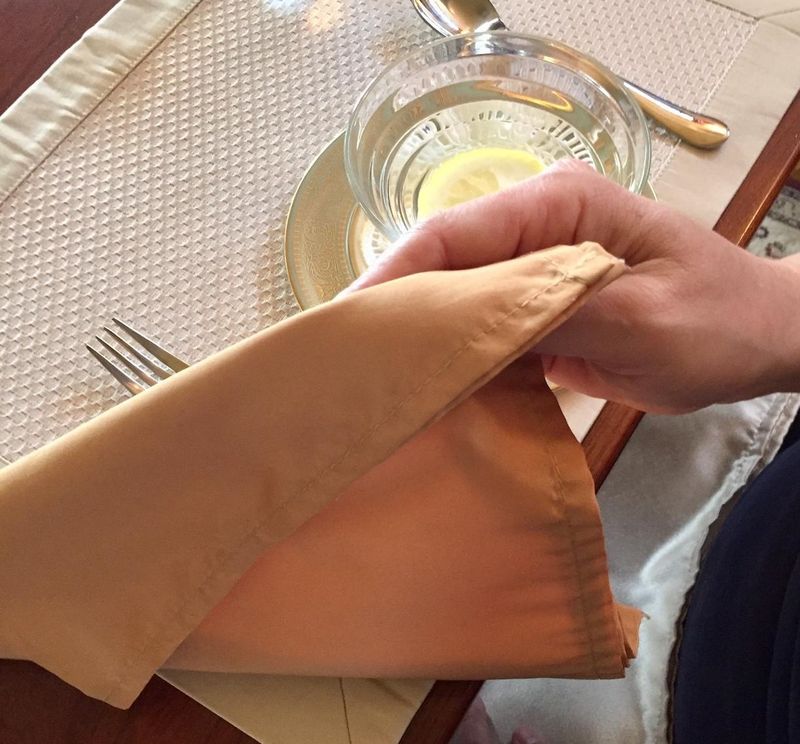
The ritual of placing a napkin in your lap was non-negotiable. It was treated as a fundamental sign of good breeding, a requirement at the start of every meal.This was about maintaining decorum and cleanliness, ensuring one’s attire stayed pristine.
It was a small gesture, yet it held significant weight in dinner table etiquette. In this day and age, it feels rather formal, a remnant of a time when dining was a performance. While it taught attention to detail and respect for shared meals, the rigidity often overshadowed the enjoyment of dining.
Today, while table manners are still valued, there’s a greater emphasis on the experience and interaction, making meals more relaxed and enjoyable.
25. Never Wear Jeans to Church or Formal Events

Wearing jeans to church or formal events was unheard of. Denim was considered too casual for sacred or serious settings, a rule that was strictly enforced. The belief was that one’s attire should reflect the solemnity of the occasion.
This practice was less about the clothing itself and more about showing respect through appearance. Now it seems to me a bit restrictive, turning clothing into a barrier for participation.
While dressing appropriately is still valued, there’s more flexibility today, allowing individuals to express themselves while maintaining respect for the occasion. It’s a reminder of how cultural norms evolve, making room for individuality without compromising the significance of the event.
26. Use a Fork and Knife — No Fingers Allowed

Using a fork and knife for everything was the rule, even for foods that seemed perfectly fine to eat with fingers. It wasn’t just about etiquette; it was a way of life. This was seen as the pinnacle of good manners, separating the refined from the unruly.
Even casual meals required precision and restraint, turning every bite into a test of decorum. Now I could imagine using cutlery for foods that naturally lend themselves to finger-eating.
While it taught discipline and respect for shared meals, it also added a layer of formality to everyday interactions. Today, while proper dining etiquette remains valued, there’s more room for practicality and comfort, allowing individuals to enjoy their meals without unnecessary constraints.
27. Don’t Touch Your Hair at the Dinner Table
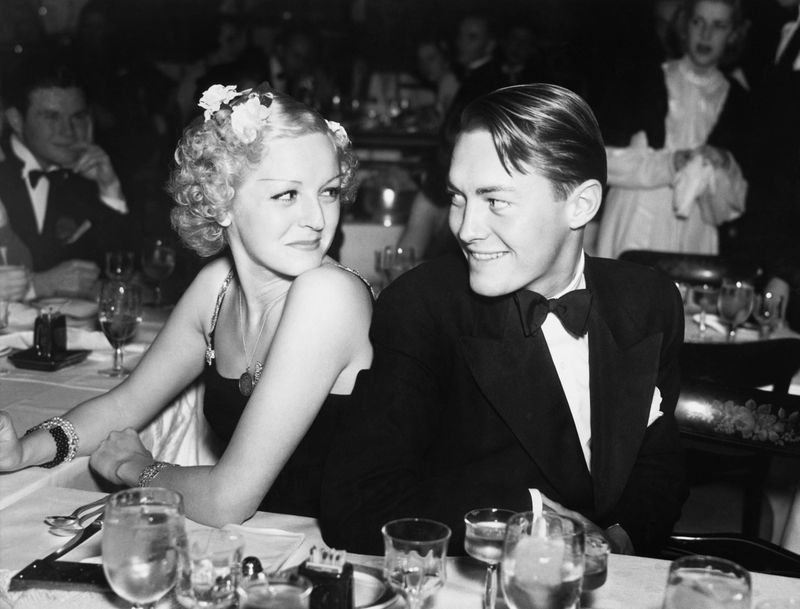
Touching your hair at the dinner table was a major faux pas. It was an oddly specific rule, yet it carried significant weight in the realm of etiquette. This was less about hygiene and more about distraction. The focus was supposed to be on the meal and conversation, not personal grooming.
It was about maintaining decorum and avoiding unnecessary fuss. If I heard this today, it would seem like an overreaction. It’s hard to imagine how a simple gesture could disrupt the dining experience so dramatically.
Yet, it was a reminder of the rigid expectations that governed social interactions, turning meals into tests of restraint and composure. Today, while distractions are still minimized at the table, there’s more understanding and flexibility, allowing for a more relaxed and enjoyable dining experience.
28. Never Talk About Money
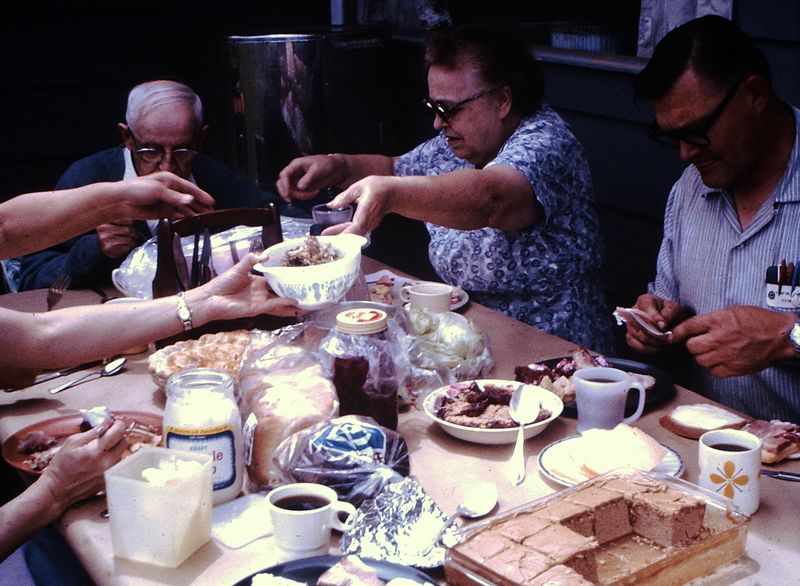
Discussing money was off-limits, a taboo topic that was rarely broached. It was a subject best left to adults, far removed from polite conversation. This wasn’t just about discretion; it was about maintaining privacy and avoiding potential conflicts.
Money was seen as a personal matter, something to be kept behind closed doors. Now I’d think of it like a missed opportunity for education and transparency. While discretion is still valued, there’s more openness today, encouraging discussions about finances to foster understanding and awareness.
It’s a reminder of how cultural norms evolve, making room for conversations that empower individuals and promote financial literacy without compromising privacy or respect.
29. Excuse Yourself Politely, Even in Emergencies

Even in emergencies, politeness was paramount. Excusing oneself was a scripted ritual, ensuring no abrupt departures upset the decorum. The expectation was that teens would navigate even urgent situations with grace, using phrases like “excuse me” to maintain social harmony.
It was less about the emergency and more about preserving appearances. Today, it would seem excessive, prioritizing manners over practicality. While politeness is still valued, there’s more understanding today, acknowledging that emergencies require prompt action.
This is a reminder of the balance between maintaining etiquette and addressing real-world needs, allowing individuals to navigate social situations with both respect and pragmatism.
30. Always Dress One Step Above Casual

Dressing one step above casual was the norm. Even informal gatherings demanded a level of polish that seemed more suited to formal occasions.This wasn’t just about looking good; it was about projecting a sense of respect and preparedness.
Every outing was treated like a mini event, requiring attention to detail. Just imagine! What an effort for everyday activities!
While dressing appropriately is still appreciated, there’s more flexibility today, allowing individuals to express themselves while maintaining respect for the occasion. It’s a reminder of how cultural norms evolve, making room for individuality without compromising the spirit of the event.
31. Keep Your Hands Out of Your Pockets
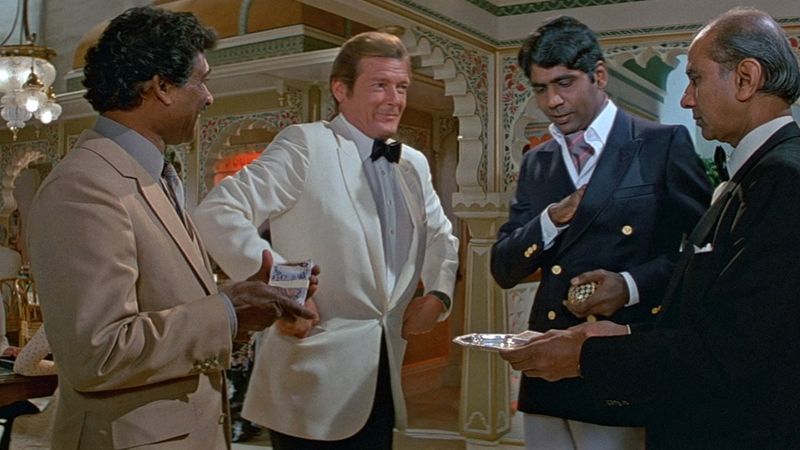
Keeping hands out of pockets was seen as a sign of engagement. The gesture was considered lazy or rude, a minor action with significant social implications. This was about projecting an image of attentiveness and respect, ensuring one appeared present and engaged in the moment.
I think this was less about the action itself and more about the perception it created. Nowadays, it seems overly critical, turning a minor gesture into a social faux pas. While attentiveness is still valued, there’s more understanding today, acknowledging that comfort can coexist with respect.
I find it a reminder of the balance between maintaining etiquette and allowing for personal comfort, fostering more authentic and relaxed social interactions.
32. Smile When You’re Being Spoken To
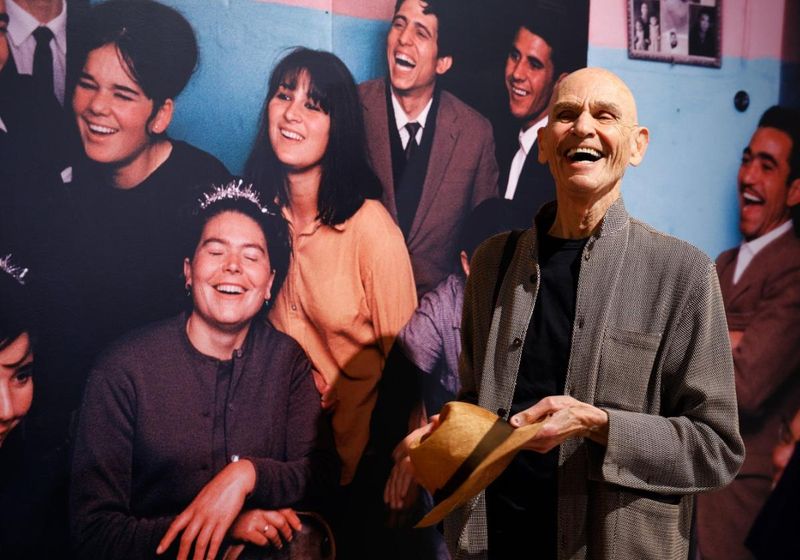
Smiling when spoken to was mandatory, regardless of the situation. It was about projecting positivity, even if discomfort or nerves lay beneath. The expectation was that a smile would convey attentiveness and respect, ensuring the interaction remained pleasant.
It was less about genuine emotion and more about maintaining appearances. I find this a cover, masking true feelings for the sake of etiquette. While positivity remains valued, there’s more understanding today, encouraging genuine expressions that foster more meaningful connections.
It’s a reminder of the balance between maintaining social norms and allowing for authenticity, creating interactions that are both respectful and true to individual emotions.
33. Always Say “Excuse Me” When You Sneeze or Burp
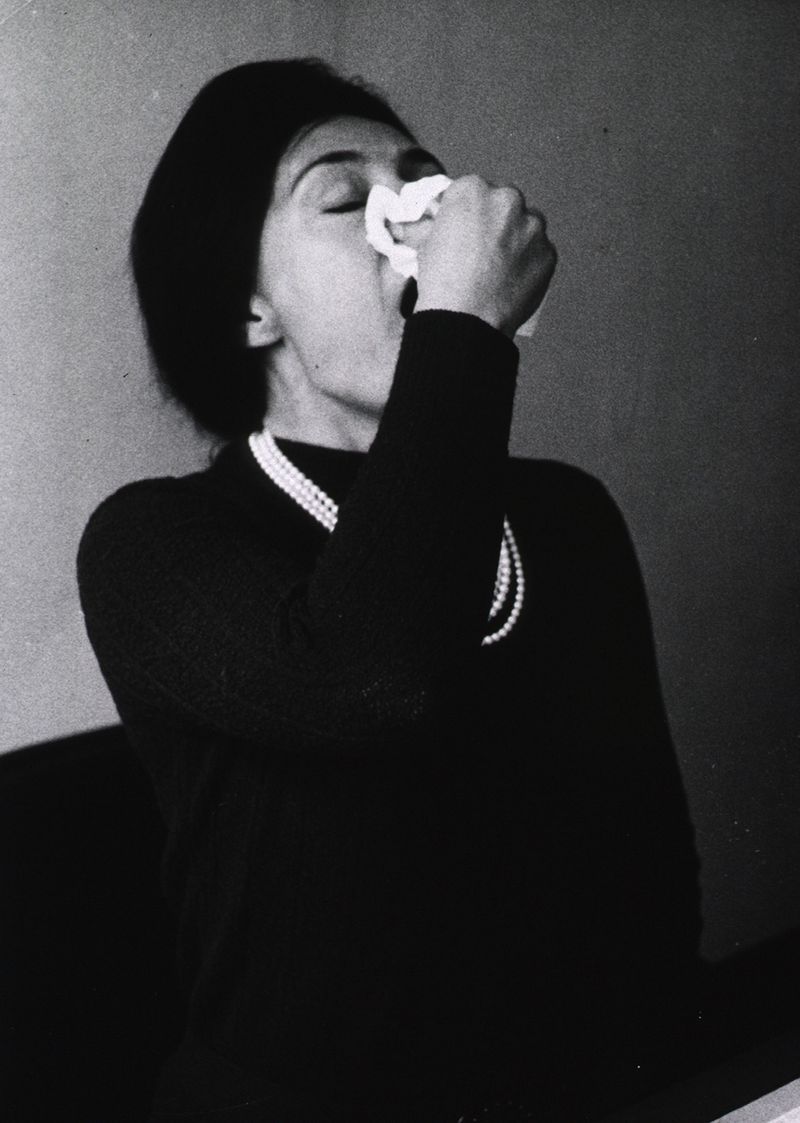
Excusing oneself after sneezing or burping was a must. This wasn’t just about politeness; it was about acknowledging even the most innocent bodily functions. The expectation was clear: maintain decorum at all times, ensuring no action went unnoticed or unaddressed.
There’s nothing true about it, nowadays! It’s less about the act itself and more about the perception it created. It is rather strict.
Politeness is still cherished, there’s more flexibility today, allowing individuals to address natural occurrences without undue pressure. It’s a reminder of the balance between maintaining etiquette and acknowledging the realities of human nature, fostering interactions that are both respectful and forgiving.
34. Don’t Leave the Table Until Everyone’s Finished
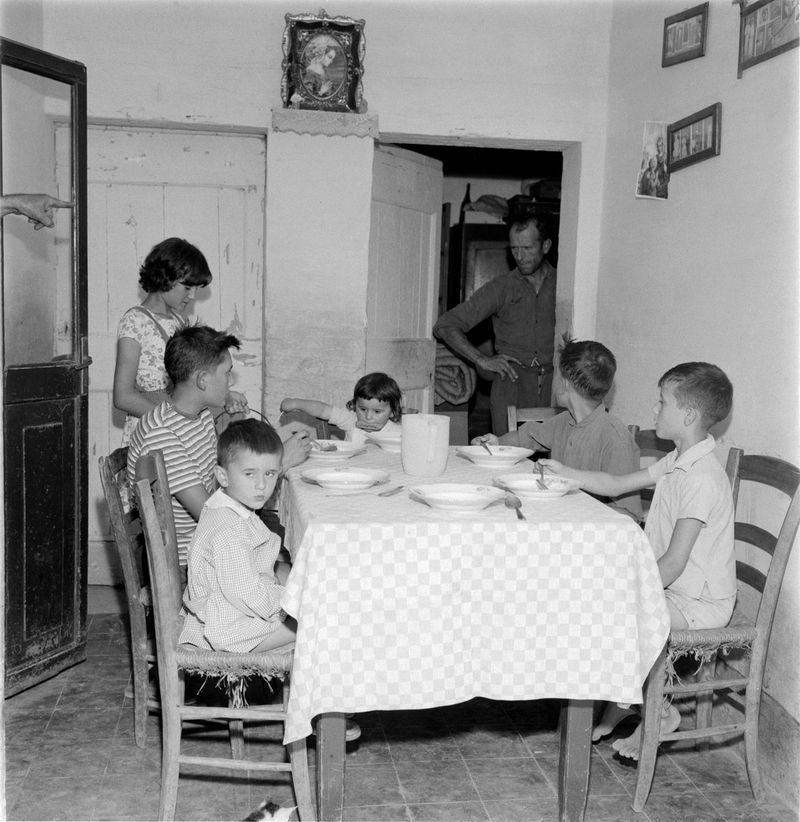
Leaving the table before everyone was finished was unacceptable. It was about respect and togetherness, ensuring meals were shared experiences. This was about maintaining cohesion, reinforcing the importance of family and social bonds.
It might seem over-the-top today, but back then, boomers did some crazy things as kids so perhaps they needed rules and boundaries to keep them in check.
Togetherness remains valued, there’s more flexibility today, acknowledging individual needs and time constraints. It’s a reminder of the balance between maintaining tradition and adapting to modern lifestyles, fostering interactions that are both meaningful and considerate.
35. Never Discuss Politics or Religion at the Dinner Table

Discussing politics or religion at the dinner table was off-limits. These topics were considered too controversial, best left untouched to maintain harmony. It was about avoiding conflict, ensuring meals remained pleasant and uncontroversial.
The rule was less about the topics themselves and more about preserving the peace. Now it seems like a missed opportunity for meaningful dialogue.
While harmony remains important, there’s more openness today, encouraging discussions that broaden understanding and perspectives. It’s a reminder of how cultural norms evolve, making room for conversations that are both respectful and enlightening.
36. Mind Your Language with Slang

Language decorum was paramount, and excessive use of slang was frowned upon. Boomers were expected to maintain a polished vocabulary, especially in mixed company or formal settings. This expectation aimed to reflect one’s intelligence and family upbringing.
Slang was seen as rebellious, and using it excessively could label one as disrespectful or even uneducated. Curbing slang use taught teenagers the art of code-switching, adapting their language to suit different environments. In retrospect, it encouraged a dynamic understanding of communication, balancing modern trends with tradition. This unwritten rule shaped their communication skills profoundly.
37. Always Write with Your Right Hand
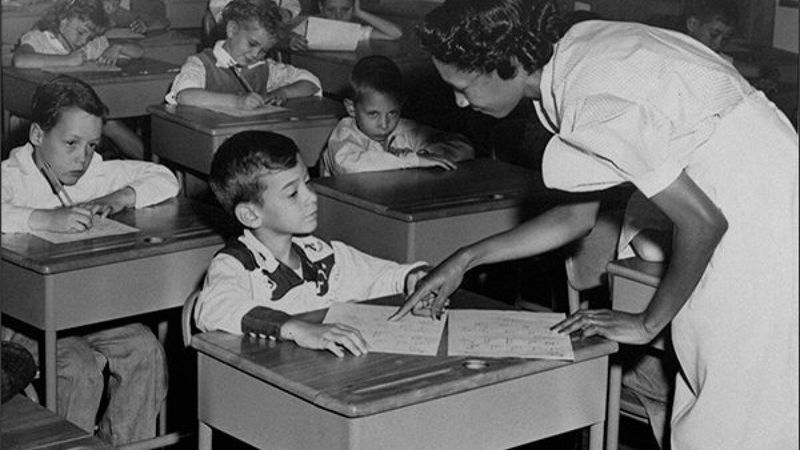
In the not-so-distant past, left-handed students often faced pressure to conform to a right-handed world. Teachers would insist on right-hand writing, believing it was the “correct” way. This practice aimed to standardize handwriting but overlooked the natural inclinations of many students.
Imagine the frustration of having to switch hands for something as personal as writing! This rule was more than just about handwriting; it reflected a broader societal push for uniformity. Lefties had to adapt or face constant reminders of their “difference.”
Today, this rule seems arbitrary and dismissive of individual preferences, highlighting changes in educational attitudes.



